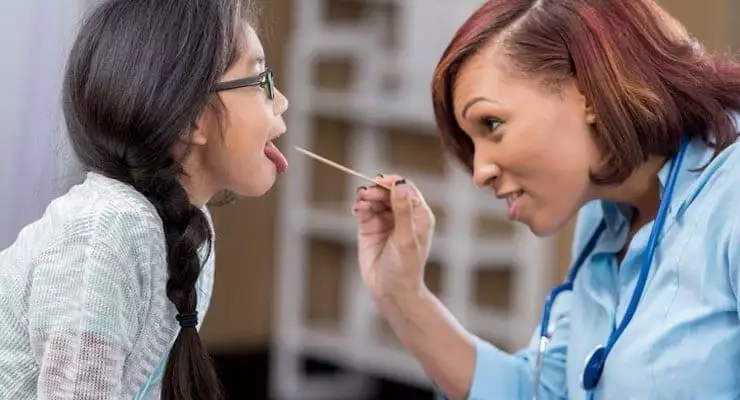Strep throat is a common concern among parents with school-aged children. This painful, highly contagious bacterial infection can lead to sore, scratchy throats, swollen glands, fever and other uncomfortable symptoms and side effects.
Children usually contract this illness by having close contact with infected individuals. However, strep can be passed through the touching of shared items, as well as other ways.
Like any good parent, you’ll want to know the most effective ways to provide relief for a child with strep throat. The following guide is an in-depth look at the illness, as well as the various methods used to diagnose, treat, and prevent it.
Spotting the Signs and Symptoms of Strep Throat
Symptoms of strep throat are much like those of tonsillitis, which is a similar, but less complicated illness.
However, identifying strep throat as the cause of symptoms is essential due to complications such as kidney damage and the development of rheumatic fever. If any of the following symptoms are displayed, immediate treatment should be sought:
- Swollen glands in the neck or armpit region. Swollen glands are common when infection is present. This is because these glands trap bacteria and other harmful substances in an effort to keep infection from spreading to the rest of the body.
- Sore throat and/or difficulty swallowing. Also common among strep throat patients are red, inflamed and blistered tonsils.
- Small red spots on the insides of the cheeks or the roof of the mouth.
- Stomach pain, nausea and vomiting. This is especially true in younger children.
- Fever that is either moderate or severe.
- Rash
- Headaches, joint pain and other types of body aches.
Diagnostics
In order to diagnosis strep throat, your child’s pediatrician must run a series of tests. First, the doctor will conduct an examination which will include a visual assessment of the throat, eyes and ears. The doctor may also feel your child’s lymph nodes in order to check for swelling and tenderness. Throat cultures are collected on a cotton swab and sent to a laboratory for testing.
Since lab results for throat cultures can take up to two days, doctors may also administer a rapid antigen test. A rapid antigen test may swiftly identify strep and other bacteria or viruses, but can sometimes miss certain strains of strep and other illnesses.
Treating Your Child’s Strep Throat
Treatment for strep throat often includes a variety of methods, including antibiotics like the following:
Penicillin – In severe cases, such as when a child can’t swallow, penicillin may be administered by injection; in others, the pill form of this drug will suffice. Typically, rounds of penicillin can last for up to 10 days. Like other antibiotics, finishing all of this medication is essential in preventing a recurrence of symptoms.
Amoxicillin – This drug is similar to penicillin, but is often used as an alternative in children. It comes in sweet-tasting, chewable tablets.
Other antibiotics – If your child is allergic to penicillin, antibiotics like azithromycin or erythromycin are often prescribed.
These types of antibiotics will provide benefits such as shortened duration of infection, stopping the transfer of infection to others and decreasing the risks of complications associated with strep throat. Once antibiotics are administered, your child will begin to feel better within a very short amount of time, often as little as a few hours.
Other types of drugs used in the treatment of strep throat include pain relievers and fever reducers like acetaminophen and anti-inflammatory drugs like ibuprofen. These medications will reduce the pain and swelling of tonsils and lymph nodes, as well as provide relief from high fevers.
Prevent Strep Throat in Your Children
Reinforcing behaviors like the following can go a long way in preventing strep throat in children:
1. Frequent hand washing.
2. Covering the mouth and nose for coughs and sneezes.
3. Never sharing drinks, food, or eating utensils.
Symptoms of Strep Throat:






